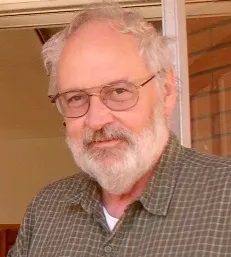When Yellowstone was in Oregon: A Talk by Bill Burgel
When Yellowstone was in Oregon: A Talk by Bill Burgel
Bill Burgel, retired railroad geologist, will present a talk on "When Yellowstone was in Oregon", on Tuesday evening, July 30, beginning at 5:30 at the White Salmon Valley Community Library. Approximately 50 million years ago, an island the size of Iceland docked onto the west coast of North American. That island was formed similar to the formation of modern-day Iceland, which is being created by a relatively rare combination of mid-ocean ridge volcanism coinciding with a mantle plume. After colliding with the continent in the area of present-day Oregon, this Iceland-like land mass, now known as Siletzia (southern half) and Yakutat (northern half now in Alaska), was scraped off the subducting oceanic crust and imbedded on the west coast of the continent. As the North American continent continued moving westward the motion of now-attached Siletzia was reversed. But the motion of the mantle plume continued its relative motion in the eastward direction, creating volcanoes and calderas on the as the North American plate moved west over it. Bill will explain the circuitous path the plume took through Oregon, creating the Crooked River Caldera (including Smith Rock State Park), then into SE Oregon creating the voluminous Columbia River Flood Basalts before exiting Oregon around 16-million-years ago to form the McDermitt Volcanic area in Nevada, the home of one of the world’s largest lithium deposits. Afterward, the plume's relative path motion was directly through Idaho, forming the Snake River Plain, arriving at its current temporary location in Yellowstone. This saga, though geologically complex, is a fascinating one that will help you make sense of the new research into the 50 million year-long journey of the Yellowstone Hot Spot! Bill Burgel About Bill Burgel - Bill retired in 2010 after a successful 40-year career working for several railroads in both the engineering and operating departments. His work for Union Pacific encompassed the design of the first computer-aided dispatching office in the nation. This office was located in Portland and Bill was the Regional Chief Dispatcher for several years before the office was moved to Omaha. While working for the railroad, his interest and training in geology was often called upon to resolve landslide issues and rerouting studies, implement early earthquake warning strategies, and conduct numerous long railroad tunnel analyses. Bill has given numerous presentations on rail issues as well as earthquake preparedness and topics pertaining to regional geology to local audiences throughout the Pacific Northwest. After retiring from the railroad in 1989, he assisted the Surface Transportation Board as their rail operations manager for two major mergers, once in Washington DC and the second time in Chicago. Bill has managed many rail studies for both Oregon and Washington DOTs as well as for TriMet and Sound Transit in Seattle.


